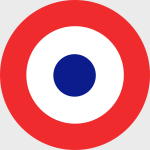Corgi AA37910 French SPAD XIII Fighter - S.7714, Captain Robert Soubiran, Lafayette Escadrille, 1918 (1:48 Scale)
"I put my bullets into the target as if I placed them there by hand."
- Rene Fonck
 The Societe Pour L'Aviation et ses Derivas, commonly known as SPAD, was a French aircraft manufacturer responsible for producing a number of significant fighter aircraft during the First World War. Originally called Societe de production des avions Deperdussin, the company was virtually bankrupt before the war when it was rescued by Louis Bleriot who changed the name while retaining the initials.
The Societe Pour L'Aviation et ses Derivas, commonly known as SPAD, was a French aircraft manufacturer responsible for producing a number of significant fighter aircraft during the First World War. Originally called Societe de production des avions Deperdussin, the company was virtually bankrupt before the war when it was rescued by Louis Bleriot who changed the name while retaining the initials.
SPAD began by building the "A-series" of pusher two-seat biplanes. In early 1915 SPAD began development of a tractor biplane designated the "S.V" which went into production as the SPAD S.VII. Improvements in the S.VII led first to the S.XII and then to the development of the definitive SPAD fighter, the S.XIII which entered service in May 1917 and equipped French, British and American squadrons. Over 8,000 S.XIIIs were eventually built.
The SPAD was most notably flown in service by Count Francesco Baracca and Capt. Eddie Rickenbacker, two of the Entente highest scoring aces of WWI with 34 and 26 victories respectively. It was also flown by most French aces, including Georges Guynemer, one of France's most popular pilots.
Pictured here is a 1:48 scale replica of a french SPAD XIII fighter flown by Captain Robert Soubiran of the Lafayette Escadrille.
Sold Out!
Dimensions:
Length: 5-1/4-inches
Wingspan: 6-3/4-inches
Release Date: February 2024
Historical Account: "Lafayette Escadrille" - A French-born American citizen, Robert Soubiran felt it was his duty to go and fight for the country of his birth at the start of the First World War, travelling to France at his own expense, to join the French Foreign Legion on his arrival. He joined with fellow future Lafayette Escadrille pilots James Bach, Bert Hall, Kiffin Rockwell, Paul Rockwell and William Thaw and served with the 2nd Foreign Regiment in the Battle of Champagne, with the 170th Line Infantry Regiment.
Injured during the fighting in October 1915, he spent four months recuperating, during which time he applied for and was accepted into the French Service Aeronautique, graduating on 20th October 1916 and joining Escadrille Americaine two days later. Around one year of combat flying later, Soubiran was awarded the Croix de Guerre with Palm for actions covering an attack against German Drachen balloons, where he was credited with his only aerial victory of the war.
He transferred to the 103rd Pursuit Squadron US Army Air Service following America's entry into the war, where he continued to fly combat missions, eventually rising to the position of Commanding Officer. One of the first American nationals to arrive in France in 1914, Soubiran was also one of the last to leave in 1919 following the end of the war, having accumulated over 400 hours of combat flying.






